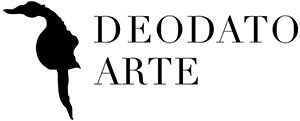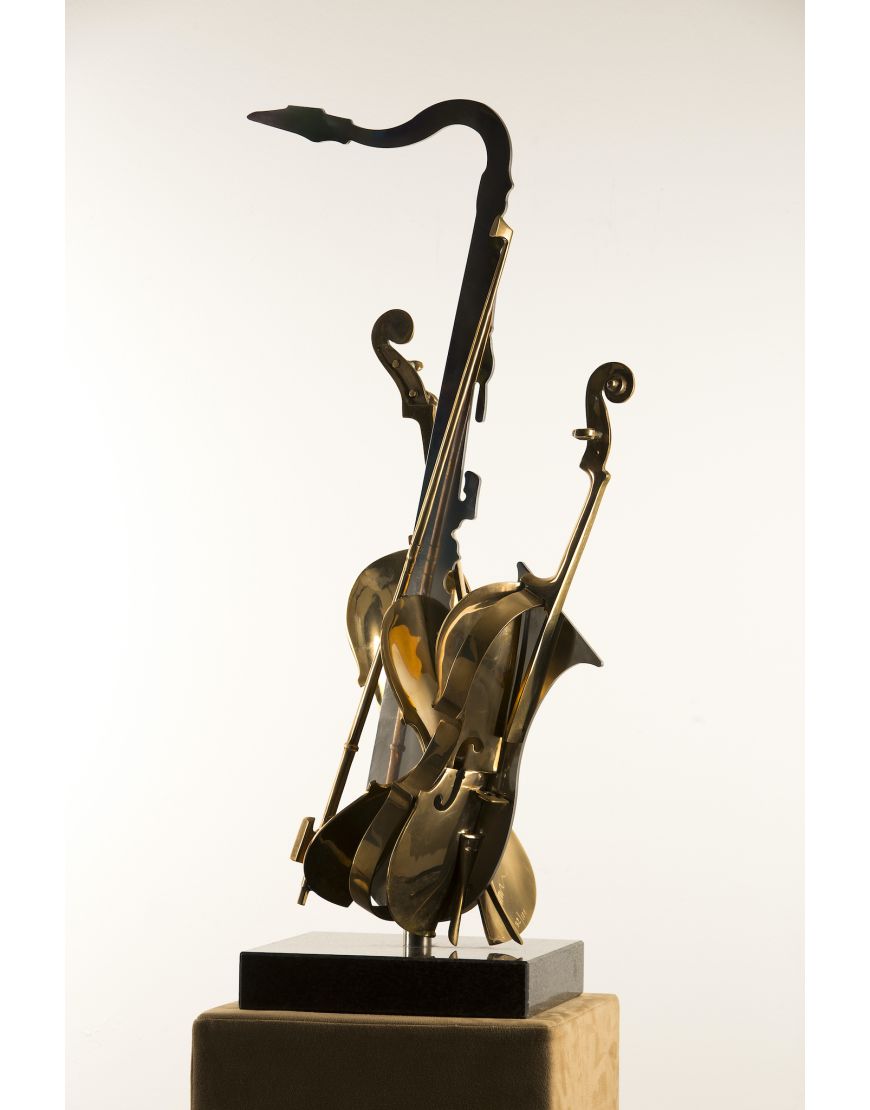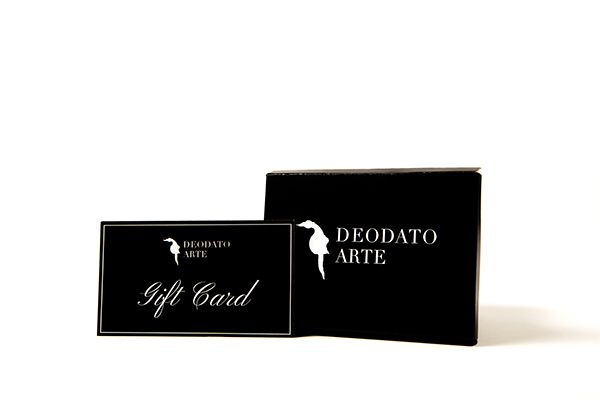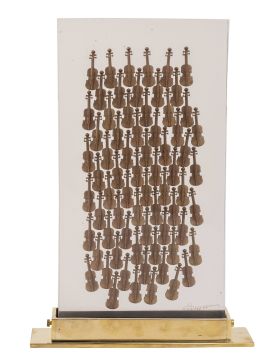- Home
- Artists
- Alex Katz
- Andy Warhol
- Angelo Accardi
- Arman
- Arnaud Nazare-Aga
- Banksy
- Bearbrick
- Bernard Aubertin
- Christo
- Damien Hirst
- Daniele Fortuna
- David Kracov
- David LaChapelle
- Dorit Levinstein
- Felipe Cardena
- Georges Braque
- Giosetta Fioroni
- Helmut Newton
- Henri Matisse
- iClim
- Invader
- James Rosenquist
- Jean-Michel Basquiat
- Jeff Koons
- Joan Miró
- José Molina
- Kaws
- Keith Haring
- Kenny Scharf
- Liu Bolin
- Lucio Fontana
- Marc Chagall
- Marco Glaviano
- Marco Lodola
- Mark Kostabi
- Maxime Siau
- Miaz Brothers
- Mimmo Rotella
- Mr. Brainwash
- Mr. Savethewall
- Obey
- Orticanoodles
- Pablo Picasso
- Richard Orlinski
- Robert Indiana
- Roy Lichtenstein
- Romero Britto
- Salvador Dalì
- Stik
- Takashi Murakami
- Tomoko Nagao
- Tvboy
- Yayoi Kusama
- ...other artists
- Athos Faccincani
- Carlo Massimo Franchi
- Davide Nido
- Franco Costalonga
- Francesco Musante
- Giampaolo Talani
- Giovanna Fra
- Giuliano Grittini
- Giuseppe Chiari
- Hiroyuki Takahashi
- Hitomi Maehashi
- Lido Bettarini
- Manolo Valdés
- Manuela Manes
- Matteo Guarnaccia
- Maurizio Galimberti
- Mimmo Paladino
- Salvatore Emblema
- Sam Francis
- Ugo Nespolo
- Xiaogang Zhang
- Gift Shop
- META VR
- BLOG
- ABOUT
- BUSINESS B2B
- Artists
- Alex Katz
- Andy Warhol
- Angelo Accardi
- Arman
- Arnaud Nazare-Aga
- Banksy
- Bearbrick
- Bernard Aubertin
- Christo
- Damien Hirst
- Daniele Fortuna
- David Kracov
- David LaChapelle
- Dorit Levinstein
- Felipe Cardena
- Georges Braque
- Giosetta Fioroni
- Helmut Newton
- Henri Matisse
- iClim
- Invader
- James Rosenquist
- Jean-Michel Basquiat
- Jeff Koons
- Joan Miró
- José Molina
- Kaws
- Keith Haring
- Kenny Scharf
- Liu Bolin
- Lucio Fontana
- Marc Chagall
- Marco Glaviano
- Marco Lodola
- Mark Kostabi
- Maxime Siau
- Miaz Brothers
- Mimmo Rotella
- Mr. Brainwash
- Mr. Savethewall
- Obey
- Orticanoodles
- Pablo Picasso
- Richard Orlinski
- Robert Indiana
- Roy Lichtenstein
- Romero Britto
- Salvador Dalì
- Stik
- Takashi Murakami
- Tomoko Nagao
- Tvboy
- Yayoi Kusama
- ...other artists
- Athos Faccincani
- Carlo Massimo Franchi
- Davide Nido
- Franco Costalonga
- Francesco Musante
- Giampaolo Talani
- Giovanna Fra
- Giuliano Grittini
- Giuseppe Chiari
- Hiroyuki Takahashi
- Hitomi Maehashi
- Lido Bettarini
- Manolo Valdés
- Manuela Manes
- Matteo Guarnaccia
- Maurizio Galimberti
- Mimmo Paladino
- Salvatore Emblema
- Sam Francis
- Ugo Nespolo
- Xiaogang Zhang
- Gift Shop
Register
Wishlist
Contact Us
- META VR
- BLOG
- ABOUT
- BUSINESS B2B


Thank you!

ORARI DI APERTURA
|MAPPA

Untitled
| Artist: Arman | Width: 40 |
| Support: Metal | Height: 74 |
VAT included
Products with VAT included show a price calculated with VAT tax, so the additional tax of 22% is already added to the price of these products.
VAT Margin
The products with VAT Margin apply the additional tax of 22% only on the margin, the difference between the price at which the product is purchased and the price at which the same product is resold.
THE ARTWORK
Untitled, Arman, Sculpture In Bronze, Signed And Numbered In Original By the Artist of the Nouveau Réalisme With Prices And Values
Arman - "Untitled" - Bronze Sculpture Signed in Original - 1998
Among Arman's production, there is "Untitled", a sculpture made in 1998 in edition of 100 pieces. The artwork is signed and numbered in its original form by the artist and has a certificate of authenticity issued by the A.R.M.A.N. Foundation.
Arman's artistic style can be traced back to the artistic movement of the 1960-70s of the Nouveau Réalisme, which developed next to Pop Art in the United States. The typicality of this artistic movement is that it examines everyday objects and "recycles" them in the three-dimensional composition of the sculpture.
Arman, a world-renowned artist, is particularly fond of violins.
His work follows two different visions: the artist sees in the musical instrument an inborn beauty. The only way to understand this beauty is to decompose object in several parts. Hence the violin, placed next to the flat shape of a sax, is now charged with a sublime aesthetics.
Untitled is a gold coated bronze sculpture placed on a marble base. Undoubtedly, this artwork is a masterpiece among the works of the artists of the Nouveau Réalisme, a work that by its nature reflects the time in which the objects have been destroyed.
Arman, "Untitled" Prices and Values
If you are interested in Arman’s violin "Untitle" click on "SHOW PRICE" and you will receive the price by email within a few seconds.
Please contact us, if you would like more information about Arman and his artworks.
Bring art into your life thanks to the extraordinary collection of Contemporary Art on our website.
ADDITIONAL INFORMATION
Sculpture realized by the Nouveau Réalisme artist Arman. Limited Edition, signed and numbered in original by the artist. The work is certified by the A.R.M.A.N. Foundation
| SKU | ARM-031219-02 |
| Technique | Mixed |
| Edition | Limited Edition |
| Support | Metal |
| Width | 40 |
| Height | 74 |
| Notes | Sculpture realized by the Nouveau Réalisme artist Arman. Limited Edition, signed and numbered in original by the artist. The work is certified by the A.R.M.A.N. Foundation |
ARTIST: ARMAN
Arman - Biography of the Artist, Painter and Sculptor
Born in Nice in 1928, Armand Pier Fernandez, commonly known as Arman, is a highly successful artist whose artistic career has developed from painting to sculpture.
At the beginning, Arman painted works on canvas using an abstract technique. Later on, the artist devoted himself to the creation of accumulations of disused objects such as shoes, watches and tubes of tempera, giving a definitive turn to his artistic career.
The artist has in fact made everyday objects the protagonists of his art: Arman's passion for sculpture is reflected in the creation of striking works.
A preferred subject that is a recurring for Arman artist are violins and musical instruments of various kinds, dissected and broken down and enriched with a gold patina coating.
Died in New York in 2005, Fernandez Arman is also remembered as one of the first artists to join the Nouveau Réalisme art movement.
With him, other artists such as Yves Klein, Raymond Hains, Jacques Villeglé, Jean Tinguely and François Dufrêne participated in this movement.
In the following paragraphs, an overview of the development of the artistic career of the sculptor painter Arman will be presented through his most characteristic works, such as accumulations and violins.
Works by Arman: Accumulations, Violins and other Sculptures
The artworks of Arman Accumulations are a result of the artistic evolution of a sculptor who, over the years, underwent a profound transformation process that contributed to the formation of Nouveau Réalisme.
In 1947 Armand Pier Fernandez met Yves Klein, a French artist who took part in this artistic movement and who had a major influence on Arman's conception of art.
In the mid-1950s, the artist began to use rubber stamps in his works, creating numerous repetitions of images, named Cachet.
In 1957, following a printing error in which the last letter of his name was omitted, Arman became the pseudonym under which the artist signed his works. This oversight also allowed him to pay homage to the artist Vincent Van Gogh, who signed each of his works only with his own name.
At the end of the 1950s, Arman focused on the creation of Allures, imprints on paper of objects impregnated in oil paint.
In the 1960s, the artist's technique underwent a further change that led to the creation of Arman's accumulations, violins and other works, among them the inclusions.
In his best-known sculptures, Arman represented Coleres, destroyed objects, Coupes, cut objects and Combustions, burnt objects.
Arman - accumulations of Objects
Arman's Accumulations works first appeared in the early 1960s, when the artist began to focus his attention on a new art form.
The Accumulations are composed of numerous identical or similar everyday objects arranged on a wooden base and enclosed by a sheet of Plexiglas.
The artist used combinations of glue, cement, polyester and solder to create blocks of objects piled up together: in his works, Arman transforms the object into art, elevating its value through infinite profusion.
During his artistic career of Arman, artist has created accumulations of all kinds and sizes, including many monumental sculptures created from the mid-1970s onwards.
Arman's Accumulation works can be grouped into three categories:
Accumulations of Real Objects
Accumulations in Plexiglas
Accumulations in a Box
Accumulations of real objects - Arman
In the Accumulations of Real Objects Arman creates impactful sculptures by inserting pieces of bronze statues and everyday objects such as work tools, clothing, cameras, shopping trolleys or car parts and much more.
Unlike Arman's other Accumulations, these are not placed in any container or immersed in resin or glue.
Some of Arman's Accumulations of Real Objects are:
- Sonny Liston, 1963
- Les Égoistes Les, 1964
- Mitraileuses, 1973
- Agricultural Fetiche, 1973
- Sculture de Poids, 1974
- Le Contre Torpilleur, 1974
- The Big Sax, 1976
- Big Parade, 1976
- Nuits de Chine, 1976
- Cool Hands Blue, 1977
- Permanent Press, 1977
- Directional, 1978
- Soixante Fois Non, 1980
- Les 1000 Yeux du Docteur Leitz, 1985
- Accumulation Renault
- More Cinderellas, 1995
- La Chute des Courses, 1996
Arman - Accumulations in Plexiglas
Arman's sculptures Accumulations in Plexiglas consist of accumulations of objects enclosed in a transparent case that allows the work to be observed from different perspectives.
In these works, the artist also elevates everyday objects to the status of works of art, bringing them to the viewer's attention in an unusual way.
By dipping objects such as buttons, coins and watches into resin or glue, Arman creates numerous Accumulations in Plexiglas:
- Les Mains, 1960
- Reflection in Desire, 1964
- Estrellas, 1966
- Heroine and Hypodermic Needles, 1969
- Long Distance, 1970
- La Partie d'Armand, 1972
- Accumulation Ten Dozen Broxo, 1972
- Accumulation Sanitaire, 1973
- In Favor of Admition, 1976
- Apres l'Orgie Chinosie, 1989
- O'Clock, 1998
Accumulations in a box - Arman
In Arman's works Accumultations in a Box the artist creates his accumulations of objects inside wooden boxes.
Using first domestic objects such as watches, women's shoes, padlocks and bottle caps and later industrial goods, Arman creates sculptures of all kinds.
Among the Accumulations in a Box created by Arman during his artistic career are:
- Fétiches de la Secte des Théophanges, 1960
- Ainsi, Font, Font, 1960
- Home Sweet Home II, 1960
- Squelette d'Achille, 1060
- Clic-Clac Kodak, Hourra!, 1961
- Artériosclérose, 1961
- Gaz à Tous les Étages, 1961
- Le Village des Damnés, 1962
- Ali Baba's Stash, 1967
- Bowery, 1970
- Khyber Pass, 1986
- Persistance des Impressions, 1991
- Minuts, 1991
- Summer Time, 1992
- Pinacothèque, 1993
- Luxieuse, 1993
- Ironic Pressing, 1995
Arman Sculptures: Violins
Arman's violins can be described as some of the artist's best known and most appreciated sculptures.
Before becoming an important exponent of Nouveau Réalisme and devoting himself to sculpture, Arman frequently depicted violins on canvas with an abstract technique that he later abandoned in favour of accumulations.
Manipulated in a variety of ways by Arman, violins and other musical instruments were broken down, destroyed or burnt by the artist, creating unique specimens.
In doing so, the artist gives new life to the instruments and transforms them into works of art, paradoxically starting from their devastation.
The subject of the violin appears in many of Arman's sculptures including Accumulations, Coleres, Coupes and Combustions.
Other works by the sculptor Arman
Arman's works realised during his artistic career are numerous and can be grouped into different categories.
In Armand Fernandez's various representations, the dark side of consumerism is emphasized while at the same time revealing a contemplation of mass goods, the basis of consumerism itself.
Through unusual, provocative but also suggestive works such as accumulations, Arman has managed to leave a significant mark on the history of art.
Among Arman's earliest and most famous sculptures are the Poubelles, followed by Coleres, Coupes and Combustions, a series of destroyed, decomposed or burnt works.
Arman - Les Poubelles
Les Poubelles are sculptures by Arman created from 1959 onwards, which consist of waste piled together in glass parallelepipeds.
In these artworks Arman encapsulates a message of criticism towards consumerist society, foregrounding the state of degradation and superficiality that industrialisation brings.
The artist wanted to make it clear how damaging rampant industrial production was, highlighting his concern about the diminishing surface area due to the ever-increasing presence of material waste.
The first Poubelles created by Arman are:
- Trash of the 60s,
- Children's Trash,
- Household Trash,
- Trash From Ludvig Museum in Cologne.
Two of Arman's Poubelles belonged to Andy Warhol, who also owned the Amphetamine Accumulation.
Colères - Arman Art and Destruction
The creation of the first Colères in Arman art production dates back to 1961, when the artist began to destroy musical instruments and then reinstall them on pedestals or wall supports.
Through the act of destroying the object Arman gives it a new life, humanising it and showing that in addition to its outward appearance, every material thing also has a soul.
Using wind instruments, pianos, cellos and violins, Arman creates ironic and provocative sculptures that will become an important part of art heritage.
The artist created several Colères during live performances: one of the best known is Conscius Vandalismwhere he destroyed the entire furniture of a kitchen at the Gibson Gallery in New York with an axe.
On another occasion, the sculptor performed Colère de Contrebasse live in front of NBC cameras filming the movie Impasse Ronsin.
The first ever performance was during the Nouveau Réalisme festival where, in order to realise Chopin's Waterloo, Arman broke the Henry II-style furniture.
Other Arman works belonging to the Colères series include:
- NBC Rage, 1961
- Colère de Paganini
- Colère Musicale, 1962
- Pour Rome
- La Secrétairé Renvoyée
- Photo Stop Colère, 1963
Arman Collection - Coupes
Arman's sculptures belonging to the Coupes collection were made from 1961 onwards, and in this series of works the artist also uses violins as his subject matter.
The assiduous presence of these musical instruments in Arman's works is due to the artist's childhood memories of his cellist mother.
In Arman's Coupes, violins and other objects were dissected by the artist and then reassembled on a panel, creating a rhythmic sequence that gave elegance to the instrument, despite the altered state of it.
Some of Arman's sculptures from the Coupes series are:
- Subida al Cielo, 1961
- Accord Majeur, 1962
- 24th Caprice de Paganini, 1962
- Violon Coupé en Longeur
Combustion - Arman's Sculptures burnt
In 1963, the painter-sculptor Arman created a new series of impactful works renamed Combustion: Armanburns objects, implementing a highly destructive treatment.
In the performances in which he created Combustion, Arman set fire to the subject of the work and then extinguished the flames before the subject itself was completely destroyed.
In this way, the artist made the musical instruments lose their primary function in order to contextualise them in a new reality.
- L.H.O.O.Q, 1964
- Prie-Dieu, 1964
- Piano Flamboyant, 1966
- Mirror Mirror, 1984
- Pompei's Syndrome, 1984
- Open Space, 1984
- Grandfather's Incineration, 1984
- Spilled Ashes, 1984
- Horizontal Catastrophe, 1984
- Uncomfortable, 1984
- Feu Louis XV, 1985
Arman - Monumental Sculptures
Around the mid-1980s, Arman devoted himself to the creation of monumental sculptures by making large-scale accumulations.
The artist created public works of various kinds using machines, musical instruments, industrial pieces and much more.
Among Arman's first monumental sculptures in 1985 is Music Power, a reproduction of a bronze double bass installed at the Acropolis in Nice.
In the same year, The Time Of All and Point Of Life were also created by the artist and placed at the Saint Lazarre station in Paris, followed by numerous others over the years.
Arman's most famous Monumental Sculptures are:
- Long Term Parking of 1982 consisting of 60 cars and a height of about 15 metres;
- Cavalleria Eroica of 1987 installed in Monte Carlo;
- Slice of Liberty from 1986 for the centenary of the Statue of Liberty;
- Hope for Peace from 1990 consisting of 78 military vehicles from different eras and nations in honour of the end of the Civil War in Lebanon.
Arman - sculptor Arman Prices and Value
If you are looking for Arman's quotations, prices and artworks for sale, Deodato Arte Gallery in Milan will offer you a complete and reliable service.
On our site you can find Arman's accumulations, violins and other works by the artist who contributed to forming Nouveau Realism.
To find out which works by Armand Pier Fernandez will be on display at the Deodato Arte Contemporary Art Gallery, do not hesitate to contact us by sending an e-mail to galleria@deodato.com.
Participate in the beauty of art thanks to the vast selection of Arman sculptures that Deodato Arte offers you.
SHIPMENT DETAILS
The artwork is delicate and requires a custom-made wooden box to protect it during transportation. Delivery to EU countries takes 5-15 business days.
For deliveries outside the EU there may be a clearance delay at customs. Contact galleria@deodato.com to receive an estimate of possible customs delays.
The shipping cost is calculated before payment. The cost of the box and packaging is included in the shipping cost.
For more information, please visit our Shipping Methods, Returns and Refunds.
CERTIFICATE AND HD IMAGE
By registering you can download a template of the certificate of authenticity and/or HD image. Register and make the page reload.
REGISTER OR LOGINHOW TO BUY
We are happy that you decided to buy an artwork. We'll explain how to do it, but always remember that you can also buy via email (galleria@deodato.com), by phone (+39 02.80886294) or by physically coming to one of our galleries.
PRICE
If the price is visible in the product fiche you can click "ADD TO CART" and proceed autonomously choosing later how to pay and how you like shipping (or pick-up it in one of our store).
If the price is not visible, you must press the "SHOW PRICE" button, so you will receive an email with the price and a button, "DON'T LOOSE IT, BUY NOW": if the price is right for you click on this button and you will be sent back to the site to complete the purchase.
TAX
if you LIVE IN EU
If you live in Europe (CEE) the price we show you already includes taxes. The works are taxed either with VAT exposed (22%) or VAT with the margin, if you are a private person you do not change anything, if you are a company: in In the first case, you will recover the VAT, in the second, no. When you put the works in the cart you will be separated from the vat exposed.
If you DON'T LIVE IN EU and you want an EXTRA EU shipping
Many works (not all) have an exposed VAT of 22% included in the price, this vat will be spun off! Obviously you will pay the VAT to your destination country, if due. For example if you live in Switzerland you save 22% but you will have to pay 8.1% to your customs, if you live in Hong Kong you will save 22% and you will not have to pay anything to your customs (lucky you).
SHIPPING
Shipments are insured, check the product fiche for more information, or write to galleria@deodato.com. For works in stock the delivery time for Italy is three working days, before placing your order please contact us via email (galleria@deodato.com) or by phone (+39 02.80886294) to check availability.
PAYMENT
If you complete the purchase on the site you can use a credit card, or you can make a bank transfer. Payment in cash is accepted up to 5,000 euros physically in one of our stores. Payments in BitCoin or cryptocurrencies are NOT accepted.
- Mr. Savethewall My heart - Poster£12.63 VAT included
VAT included
Products with VAT included show a price calculated with VAT tax, so the additional tax of 22% is already added to the price of these products.
VAT Margin
The products with VAT Margin apply the additional tax of 22% only on the margin, the difference between the price at which the product is purchased and the price at which the same product is resold.










 Register
Register Wishlist
Wishlist Contact Us
Contact Us










